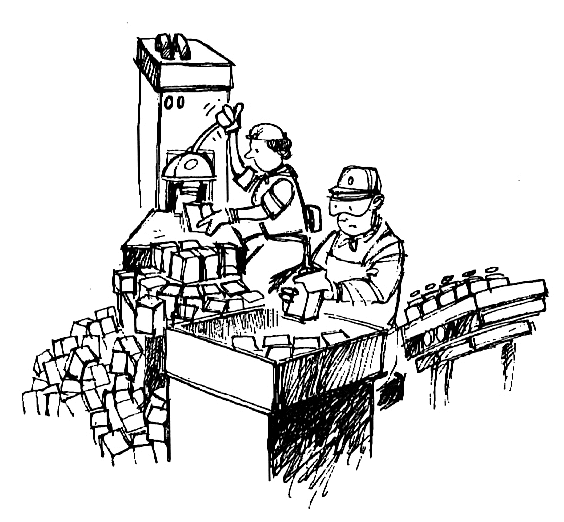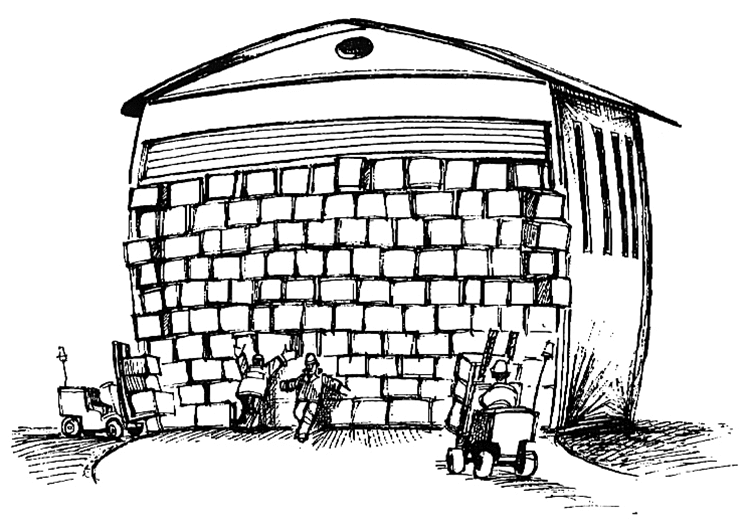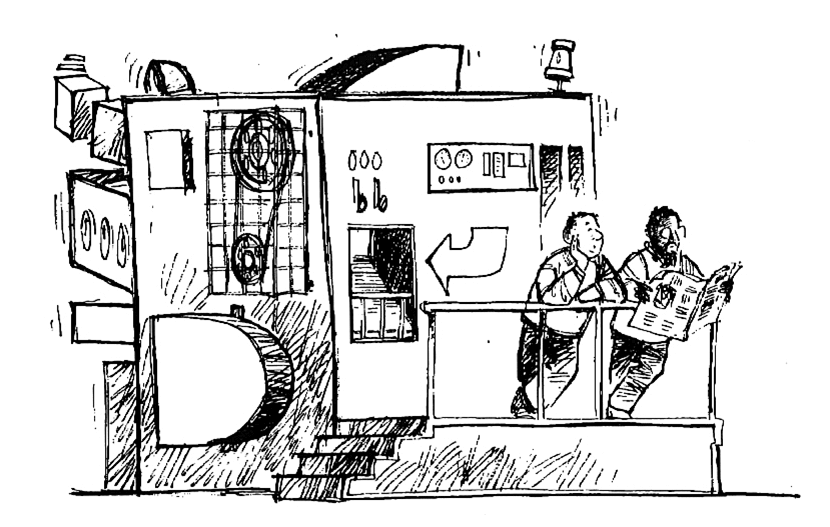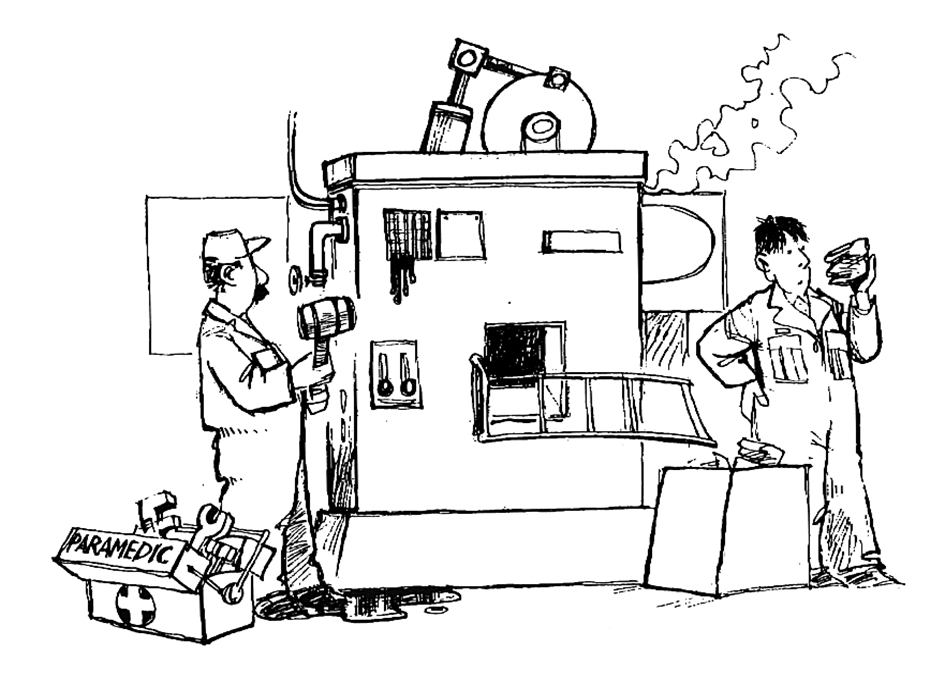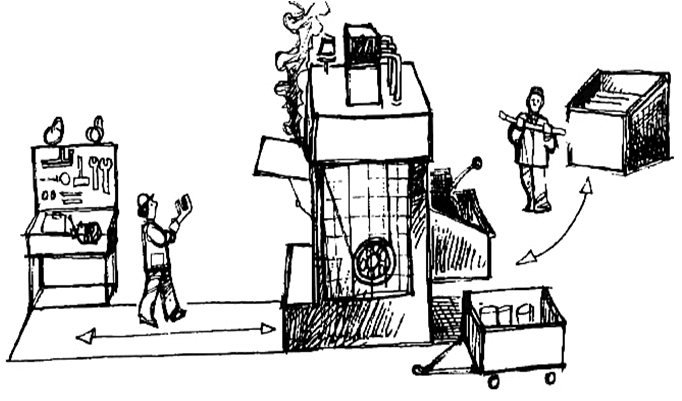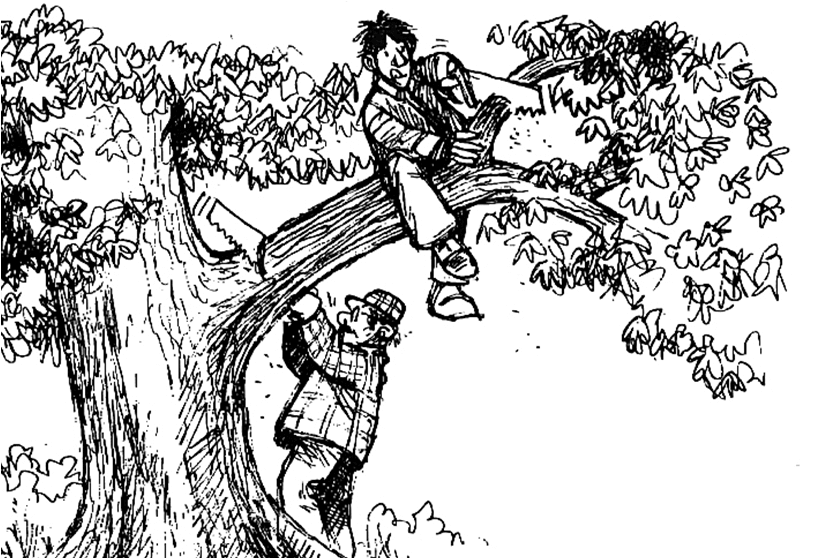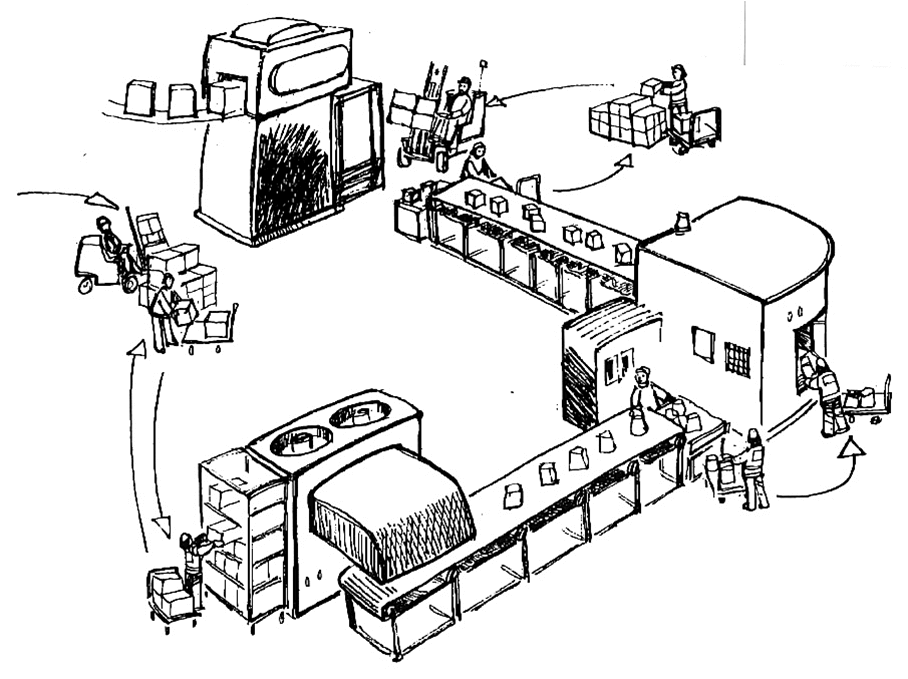In the definition of Lean there are 8 major classifications of waste, these activities are not necessary to deliver value to our customer and should not exist, then we need to look for ways to eliminate or reduce as much as possible.
Overproduction
Production of larger quantities before necessary. It is the most expensive waste that generates other waste such as Excessive Lead Time, which makes it difficult to detect defects, a large number of employees, additional storage, and transportation costs due to excess stock.
Common causes of overproduction:
- Wrong sales forecasts
- Production at maximum capacity to maximize the use of machinery/personnel
- Overcoming problems caused by fluctuating peak orders, or production problems
- “If …” Production
- Optimal production batch (lowest total cost)
Inventory
Occurs when there are unnecessary levels of raw material, many units in the process (WIP), finished products, tools, or any necessary goods/resources.
Excess stock hides issues such as production imbalances, delayed supplier deliveries, defects, machine downtime, long settings, long production changes, and more.
Waiting
Occurs when goods are not moving or not being processed: In traditional batch-and-tail production, the longest Lead Time of the products is closely related to waiting at each stage for the next operation.
Common reasons for waiting:
- Poor material flow, large batch production & capacity blockages.
- Machine downtime & material shortages.
- Long production change times & no production plan.
Motion
Physical movements that employees exercise excessively among other reasons due to a lack of planning in the ergonomic field, providing low productivity and muscle fatigue.
This waste is seen in activities such as:
bending, stretching, walking, lifting, reaching something, searching, and sorting.
Overprocessing
Often known as “using the sledgehammer to break a nut”
Examples for this waste:
- Taking steps that are not necessary to perform a process due to poor layout and arrangement of machinery
- Inefficient processing due to inadequate/poor design of utensils and products
- Provide higher quality or more control than necessary
Waste of talent
Loss of ideas, skills, improvements, and learning opportunities by not hiring or disobeying your own employees. This happens when employees’ time and skills are not used properly.
- Authority and limited liability of employees in basic activities.
- Inadequate or low-availability tools to do their job.
- Lack of preparation to perform basic tasks.
- Disobedience to employees’ ideas.
- Using people for tasks that can be automated or assigned to other people with other technical skills.



